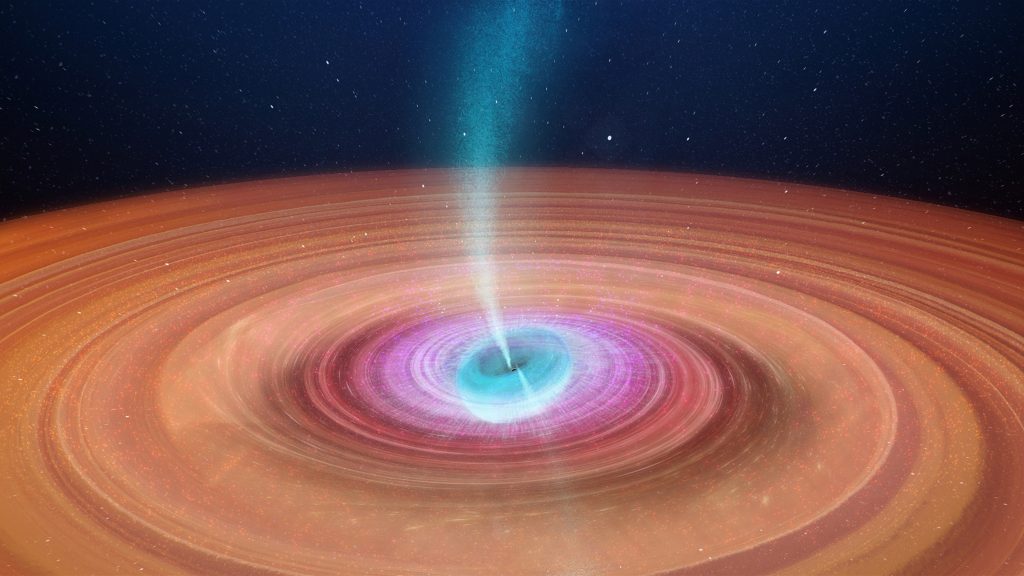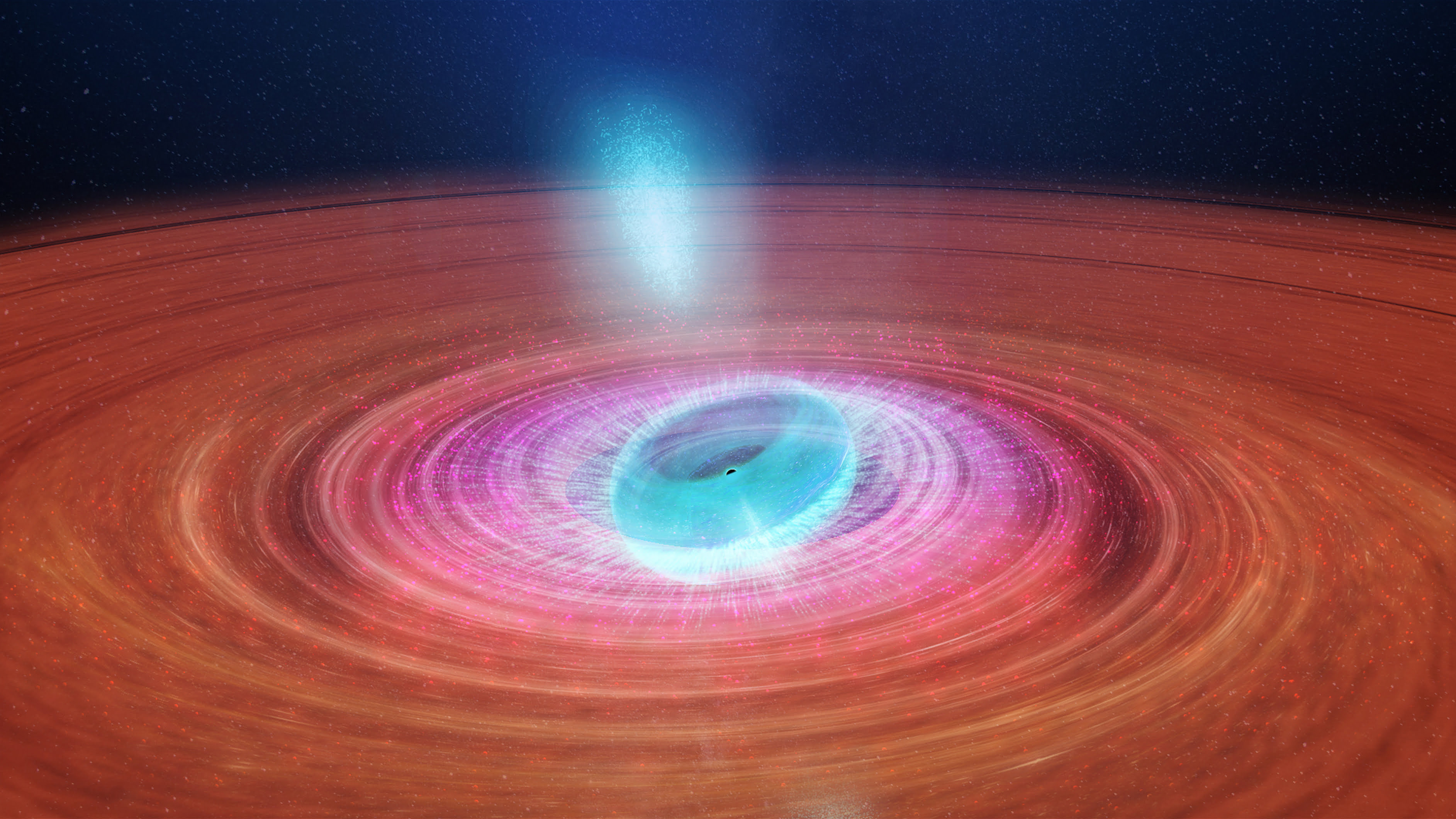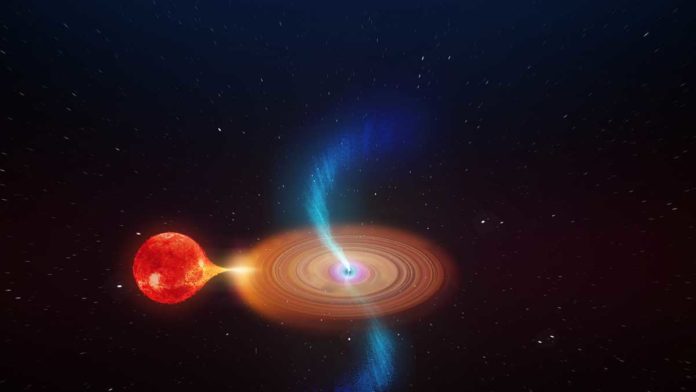Recently, astronomers have detected fast – powerful, relativistic, swirling jets coming from a black hole that lies about 8000 light-years from Earth. The black hole named V404 Cygni, behaving in a way never seen before on such short timescales.
What’s interesting is, these high-speed jets appear to be rotating with the clouds of plasma—potentially just minutes apart—shooting out of the black hole in different directions. Also, this changing jet orientation can be modeled as the Lense–Thirring precession of a vertically extended slim disk that arises from the super-Eddington accretion rate.
Lead author Associate Professor James Miller-Jones, from the Curtin University node of the International Centre for Radio Astronomy Research (ICRAR), said black holes are some of the most extreme objects in the Universe. This is one of the most extraordinary black hole systems I’ve ever come across.”

“Like many black holes, it’s feeding on a nearby star, pulling gas away from the star and forming a disk of material that encircles the black hole and spirals towards it under gravity. What’s different in V404 Cygni is that we think the disk of material and the black hole are misaligned. This appears to be causing the inner part of the disk to wobble like a spinning top and fire jets out in different directions as it changes orientation.”
Associate Professor Miller-Jones said that “when V404 Cygni experienced another very bright outburst in 2015, lasting for two weeks, telescopes around the world tuned in to study what was going on. Everybody jumped on the outburst with whatever telescopes they could throw at it. So we have this amazing observational coverage.”
The jets are normally thought to shoot straight out from the posts of black holes, these planes were shooting out in various ways at various occasions. What’s more, they were changing direction in all respects rapidly in a couple of hours.

Associate Professor Miller-Jones said, “the change in the movement of the jets was because of the accretion disk—the rotating disk of matter around a black hole. V404 Cygni’s accretion disk is 10 million kilometres wide, and the inner few thousand kilometres was puffed up and wobbling during the bright outburst.”
Associate Professor Miller-Jones said, “The inner part of the accretion disk was processing and effectively pulling the jets around with it. You can think of it like the wobble of a spinning top as it slows down—only in this case, the wobble is caused by Einstein’s theory of general relativity.”
Co-author Alex Tetarenko—a recent Ph.D. graduate from the University of Alberta and currently an East Asian Observatory Fellow working in Hawaii—said the speed the jets were changing direction meant the scientists had to use a very different approach to most radio observations. Typically, radio telescopes produce a single image from several hours of observation.”
“But these jets were changing so fast that in a four-hour image we just saw a blur. It was like trying to take a picture of a waterfall with one-second shutter speed.”
Study co-author Dr. Gemma Anderson, who is also based at ICRAR’s Curtin University node, said the wobble of the inner accretion disk could happen in other extreme events in the Universe too. Anytime you get a misalignment between the spin of a black hole and the material falling in, you would expect to see this when a black hole starts feeding very rapidly.”
“That could include a whole bunch of other bright, explosive events in the Universe, such as supermassive black holes feeding very quickly or tidal disruption events when a black hole shreds a star.”
The study is published in the journal Nature.
